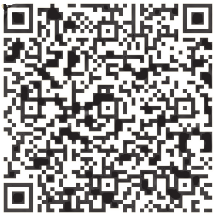 30 March, 2024
30 March, 2024
There’s No “Untreatable” Heart Block with Laser Angioplasty | Dr. A B Gopalamurugan
In the cardiovascular treatment, laser angioplasty emerges as a groundbreaking procedure, significantly altering the landscape of heart disease management. Traditional angioplasty, which involves using a balloon to dilate clogged arteries, has been a cornerstone in treating coronary artery disease. However, the advent of laser angioplasty has introduced a novel approach by utilizing laser technology to directly vaporize plaque buildup within the coronary arteries. This advanced method offers a new hope for patients with complex blockages or those deemed unsuitable for conventional procedures.
The Laser Angioplasty Advantage
Laser angioplasty is a sophisticated technology designed to open up blocked heart vessels efficiently. This lifesaving procedure is particularly advantageous for patients who have experienced a heart attack, offering them a chance at improved health and wellbeing. It stands out as the only currently available technology capable of dissolving clots within the heart’s blood vessels. Furthermore, many cases previously considered untreatable through traditional angioplasty can now be effectively managed with laser angioplasty.
Dr. A.B. Gopalamurugan: A Trailblazer in Laser Angioplasty
In 2021, India witnessed a significant milestone in the field of interventional cardiology when Dr. A.B. Gopalamurugan, alongside his pioneering team, introduced the country’s first laser coronary angioplasty. This monumental achievement positioned them at the forefront of medical innovation, operating within the cutting-edge infrastructure of MGM Healthcare in Chennai, India. Dr. Gopalamurugan, a leading figure in interventional cardiology, has dedicated his career to advancing cardiovascular care, earning him a distinguished reputation among both peers and patients.
The Procedure Explained
Laser angioplasty is a sophisticated alternative to traditional angioplasty, which relies on a balloon to compress fatty deposits against artery walls. Instead, this innovative approach utilizes lasers to directly vaporize plaques. The procedure involves the following steps:
- After administering general anesthesia to ensure comfort, a small incision is made near the groin.
- Guided by X-ray imagery, a wire is inserted into the femoral artery and navigated to the site of the blockage.
- A tube follows the wire to the blockage location, through which a laser is then introduced.
- The laser precisely vaporizes the plaque buildup, with the process monitored through the use of contrast dyes.
- Upon completion, the instruments are removed, and the incision is closed, followed by a period of rest for the patient.
The Benefits of Laser Angioplasty with Dr. Gopalamurugan
Choosing laser angioplasty under the expertise of Dr. Gopalamurugan and his team offers several benefits:
- Precision with Utmost Care: Leveraging state-of-the-art technology, the procedure is carried out with unparalleled precision, ensuring the best possible outcomes for patients.
- Improved Quality of Life: By significantly reducing the chances of requiring open heart surgery, patients enjoy a quicker recovery, less time in the hospital, and an overall boost in their quality of life.
- Excimer Laser System: This advanced system is safe and effective, particularly useful in managing chronic total occlusions and as an adjunct to conventional percutaneous coronary intervention (PCI).
Why It’s a Game-Changer
The introduction of laser angioplasty by Dr. Gopalamurugan and his team marks a pivotal moment in cardiac care, offering several unique advantages:
- Targeted Treatment: The laser’s precision allows for targeted treatment of blockages, including those in difficult-to-reach places or in vessels that have previously been considered untreatable.
- Less Traumatic: Unlike mechanical methods that physically push plaque against artery walls, laser angioplasty vaporizes plaque, reducing trauma to the artery and potentially lowering the risk of complications.
- Versatility: The procedure is versatile, effective in treating a range of blockages, including chronic total occlusions, where traditional methods might fail.
- Rapid Recovery: Patients typically experience a faster recovery period due to the minimally invasive nature of the procedure, with many returning to their normal activities more quickly than they would after conventional surgery.
Frequently Asked Questions (FAQs)
Q: What makes laser angioplasty different from traditional angioplasty? A: Unlike traditional angioplasty, which uses a balloon to widen arteries, laser angioplasty employs laser technology to vaporize plaque, offering a precise and effective treatment for complex blockages.
Q: Why choose Dr. A.B. Gopalamurugan for laser angioplasty? A: Dr. Gopalamurugan is a renowned interventional cardiologist with extensive experience in laser angioplasty. His pioneering work and the use of cutting-edge technology ensure the highest standard of care for his patients.
Q: Is laser angioplasty safe? A: Yes, when performed by experienced professionals like Dr. Gopalamurugan and his team, laser angioplasty is a safe procedure. It’s an effective technique that provides an alternative to more invasive surgeries, with a focus on patient safety and comfort.
Q: What can patients expect after undergoing laser angioplasty? A: Patients can expect a significant improvement in their condition, with reduced symptoms and an enhanced quality of life. Recovery times are generally shorter compared to traditional surgery, allowing patients to return to their daily activities more quickly.
Q: What are the benefits of laser angioplasty?
A: The benefits of laser angioplasty include its ability to precisely target and remove blockages, a potentially lower risk of artery wall damage, and the possibility of being performed in conjunction with other procedures for enhanced effectiveness. Additionally, it offers an alternative for patients who may not be good candidates for traditional angioplasty or coronary artery bypass surgery due to the location or type of artery blockage.
Q: What risks are associated with laser angioplasty?
A: As with any medical procedure, laser angioplasty carries certain risks. These can include bleeding at the catheter insertion site, damage to the artery wall, formation of blood clots, and, in rare cases, heart attack or stroke. The specific risks vary depending on the patient’s overall health, the severity of the arterial blockage, and other factors.
Q: Who is a sutable for laser angioplasty?
A: Candidates for laser angioplasty are typically individuals with narrowed or blocked arteries that are causing symptoms like chest pain (angina) or are at risk of conditions such as heart attacks. It may be particularly suited to patients whose blockages are not easily treated with traditional angioplasty or surgery, including those with calcified arteries that are hard to expand with a balloon catheter.
Q: What can patients expect during and after the procedure?
A: During the procedure, patients are usually awake but may be given medication to relax. A local anesthetic is used at the site where the catheter is inserted. Patients may feel some pressure but should not experience significant pain. After the procedure, patients are typically monitored for several hours before being discharged. Recovery times can vary, but many patients return to their normal activities within a week, following their doctor’s recommendations on activity level and medication.
Q: How effective is laser angioplasty?
A: The effectiveness of laser angioplasty can depend on various factors, including the severity and location of the blockage, the patient’s overall health, and whether the procedure is combined with other treatments like stent placement. While laser angioplasty can be highly effective in improving blood flow and relieving symptoms for many patients, it’s important to discuss individual risks and benefits with a healthcare provider.








